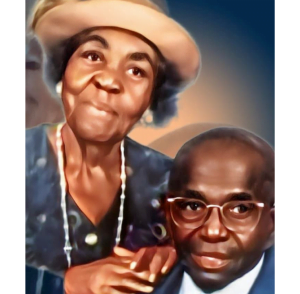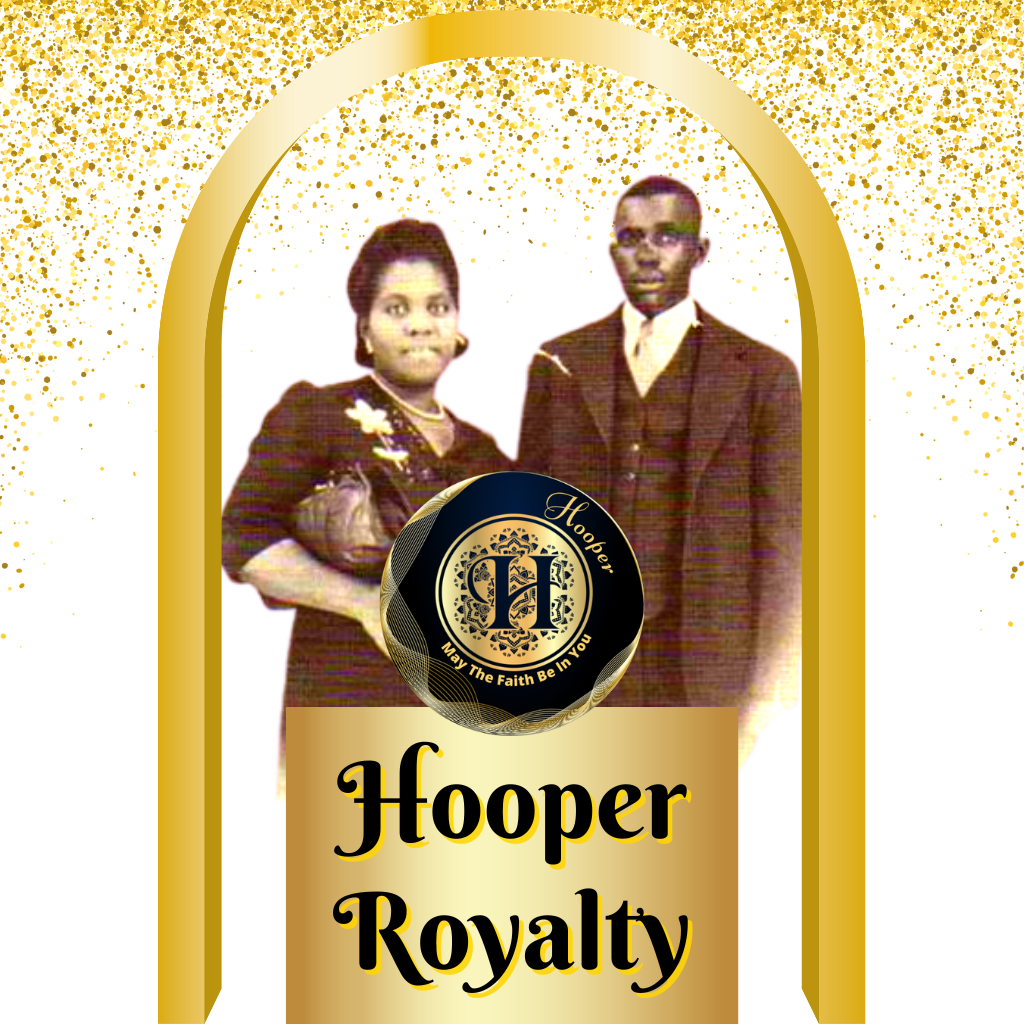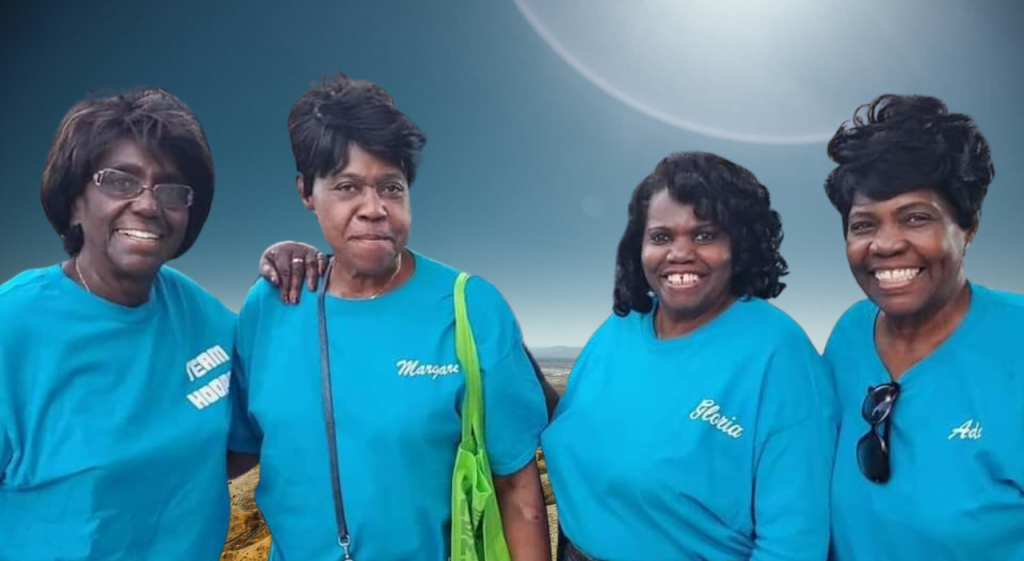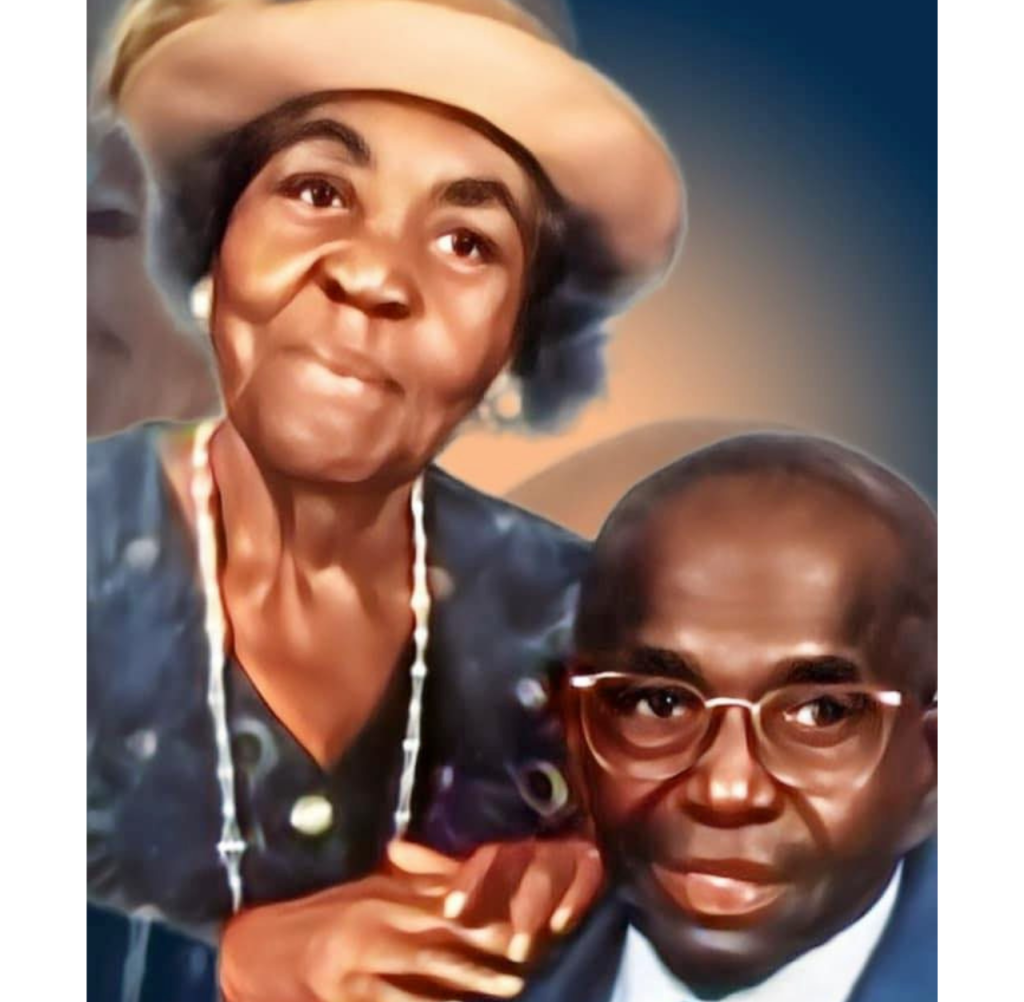Welcome, dear family, to the start of our journey through time, a tale of resilience, determination, and enduring love. This love story takes us back to the roots of our family tree, introducing us to the remarkable lives of Reverend Willie and Leola Hooper, the pioneers of our lineage.
Willie Hooper opened his eyes to the world on December 10, 1908, in the rustic town of Thomasville, Alabama. Just a little over a year later, on August 2, 1910, the resilient Leola Hooper, nee Washington, was born in the heart of Leflore County, Mississippi. These two souls, destined to intertwine, would come to shape the history of our family in profound ways.
Their paths crossed, and their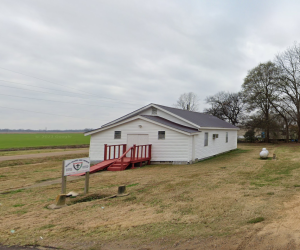 hearts intertwined. At the age of 18, Willie met Leola Washington at a worship service at Hyman Chapel Missionary Baptist Church in Sidon, Mississippi. Her father, Reverend Elijah Washington, was the pastor. The meeting at church eventually led to their marriage on the auspicious day of April 18, 1928. United in love, they made the quaint town of Sidon, Mississippi, their home, laying the foundation for what would become an inspiring family story.
hearts intertwined. At the age of 18, Willie met Leola Washington at a worship service at Hyman Chapel Missionary Baptist Church in Sidon, Mississippi. Her father, Reverend Elijah Washington, was the pastor. The meeting at church eventually led to their marriage on the auspicious day of April 18, 1928. United in love, they made the quaint town of Sidon, Mississippi, their home, laying the foundation for what would become an inspiring family story.
They were humble, hard-working individuals with their hands firmly clasped around the reins of their destiny. Willie, the self-employed farmer, and Leola, the steadfast keeper of the house, struck a challenging but essential agreement with the Durden Sidon Plantation to become sharecroppers. Their address, Beat 5 in Leflore, Mississippi, became a symbol of their perseverance.
They toiled on the land, their sweat seeping into the earth as 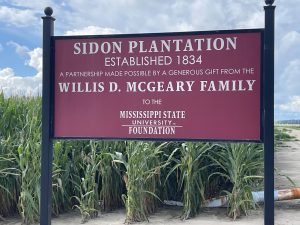 they cultivated crops and a promising future. Their contract with the Sidon Plantation stipulated that Willie would pay a sum of $5 per month in rent. In 1930, the total rent amounted to $95. Yet, their efforts, measured in currency, failed to yield an income. Their earnings for that year astonishingly stood at $0.
they cultivated crops and a promising future. Their contract with the Sidon Plantation stipulated that Willie would pay a sum of $5 per month in rent. In 1930, the total rent amounted to $95. Yet, their efforts, measured in currency, failed to yield an income. Their earnings for that year astonishingly stood at $0.
Willie and his family’s citizenship status wasn’t recorded in the 1930 census. While African Americans were granted citizenship in 1869, their legal and civil rights were severely restricted or denied for decades afterward.
Nevertheless, they persevered, their love for each other and their family acting as their guiding beacon. And thus, the trail of the Hooper Family began, etching a path of tenacity, courage, and unfaltering hope into history.
This dear family is the beginning of our tale, the first landmark on our Hooper Trail. Now, let us venture further, following the footsteps of Willie and Leola, into the chapters yet unwritten.
As our journey through the Hooper Trail continues, we find ourselves in the pivotal year of 1940. World War II has recently started, and the world is on the brink of change. Amidst the global uncertainty, Willie and Leola Hooper, too, find themselves contemplating a significant shift in their lives, the pursuit of a new home for their growing family.
In the same year, Willie registered for the draft, as was the mandate for all men born between the years 1898 and 1929. (By the way I had asked many family members if they knew or remembered where the plantation was located, but no one knew for sure, It wasn’t until I found Rev Hooper’s draft card that I found he listed his employer as the Durden Plantations, that’s how I found the name of the plantation)
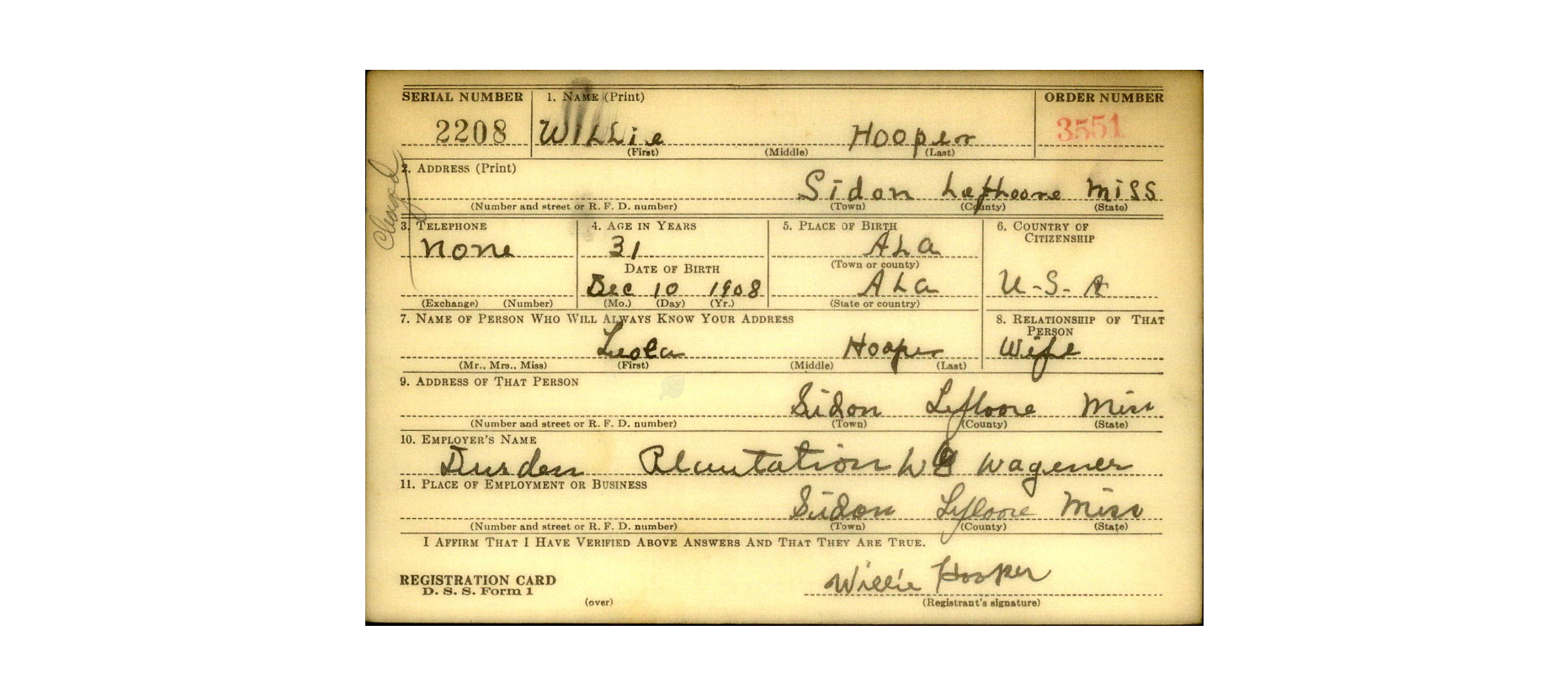
The events of war unfolding thousands of miles away create a profound uncertainty about the future. The prospect of Willie possibly being called to serve in the war adds an extra layer of risk to the family’s decision to leave the unsatisfactory but stable security of the plantation life. The decision to buy a new home, a symbol of pride and independence, is fraught with challenges and concerns.
Departing from the Plantation after over a decade of toil was no easy decision for Willie and Leola Hooper. Despite their relentless efforts and hard work, they found themselves still shackled by debts to the Plantation. At the same time, the turmoil of World War II was looming large on the horizon, creating a further sense of instability and uncertainty.
Deciding to venture into the unknown territory of farming their own land was a formidable risk. They were acutely aware of the fate of many others who had broken free from the Plantation’s grasp only to fail to make it on their own. These people, unable to cope with the challenges, just walked away from their land and returned to the Plantation’s grueling regime of sharecropping or moving to urban cities in search of better employment prospects.
The awareness of such failures hung heavy as the Hooper’s deliberated their decision. Yet, against the backdrop of these challenges and the uncertainties of the war, they were contemplating a bold step towards autonomy and self-sufficiency. The choice they were about to make would not only shape their destiny but also lay the groundwork for the legacy of the Hooper family. Their journey along the Hooper Trail was one marked by bravery, enduring hope, and the relentless pursuit of a better future, despite all odds.
Here our forebears, Willie and Leola, stand on the precipice of change, with their faith being their sturdy compass, guiding them to new horizons. They uprooted their lives from the familiar, but unsatisfactory contours of the Durden Plantation in Sidon, Mississippi, and set forth to Silver City, Mississippi, located in the heart of Humphreys County.
Here, they laid claim to a sprawling 78-acre farm, where 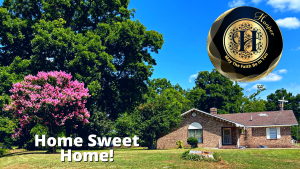 cotton, white and pure, would become their primary produce. Their departure from the Durden Plantation was not without opposition. Many accounts narrate tales of the plantation owner’s efforts to anchor them to the land, but they were determined to leave. They were told they were better off working for the Plantation, and when persuasion failed, intimidation ensued over the alleged debt they owed. But their spirits remained unbroken. They left the plantation in the middle of the night to avoid conflict with the plantation owners.
cotton, white and pure, would become their primary produce. Their departure from the Durden Plantation was not without opposition. Many accounts narrate tales of the plantation owner’s efforts to anchor them to the land, but they were determined to leave. They were told they were better off working for the Plantation, and when persuasion failed, intimidation ensued over the alleged debt they owed. But their spirits remained unbroken. They left the plantation in the middle of the night to avoid conflict with the plantation owners.
As they navigated this transition, their faith remained a steadfast constant. Initially, they were members of the Mt. Pis’gah Missionary Baptist Church in Sidon, Mississippi, under the spiritual guidance of Reverend J. W. Gayton. However, upon settling in Silver City, they found a new spiritual home at the Christian Valley Missionary Baptist Church, with Reverend T. J. Yancey at the helm.
Spirituality ran deep in the family’s veins. Both Willie and Leola were the children of preachers – Rev. Jerry Hooper and Rev. Elijah Washington, respectively. This deep-seated faith was a legacy they bestowed upon their sixteen children. Yes, dear family, you heard it right – our ancestors, Willie and Leola, raised an astonishing sixteen children with love, faith, and resilience. Let’s call out their names:
Roosevelt, Wardean, Louise, Verline, Almarine, Earnestine, Ada, Lillie, Margaret, Willie, Sara, Beatrice, John, James, Gloria, and Daniel.
They also adopted two son’s Jerry Hooper and George Hooper.
In the early days, the church also served as a schoolhouse for the Hooper children, as there was no dedicated school building, their homework was done by hand lit lamps, as there was no electricity at the time. Their days were divided between learning and laboring, their hands tending to both books and bolls of cotton. It is noteworthy that the majority of the children were girls, yet they worked the land just as diligently, picking cotton and performing other strenuous farm duties. They were the pillars supporting their family, exemplifying the indomitable spirit of the Hoopers that we celebrate today.
In 1947, our narrative takes a spiritual turn. The Divine called upon Willie to Preach, and he answered with a heart full of faith. Embracing his vocation, he delivered his first sermon and earned his pastoral license at the Christian Valley Missionary Baptist Church. His journey in Ministry didn’t stop there; he took another significant step and was ordained.
While Willie was the public face of the pulpit, Leola was his unwavering strength, his unconditional support. Willie may have been the Preacher, but Leola was the family teacher and was equally critical to the family’s spiritual growth. She stood faithfully by Willie’s side, nurturing the flame of faith that illuminated the Hooper household; faith was a very serious matter to Leola.
After receiving his license to preach, Willie was entrusted with the pastoral care of True Vine M. B. Church in the intriguingly named town of Hard Cash, Mississippi (I wonder if he asked to be paid in hard cash, no checks). Yet, his spiritual home remained the Christian Valley M. B. Church, a testament to his lasting bond with the community there.
Reverend Hooper served his calling with unwavering dedication, tending to the spiritual needs of numerous churches across Mississippi. He shepherded the faithful at El’s Chapel M. B. Church in Isola, Center Point M. B. Church in Wolf Lake, and New Hope M. B. Church, which moved from Sharkey County to Louise.
His journey continued as he pastored the Bolden Chapel M. B. Church, the Pleasant Green M. B. Church in Four Miles, Zion City M. B. Church in Pickens, Beulah Grove M. B. Church in Itta Bena, and Meeks First Baptist M. B. Church in Cruger.
His commitment to his divine calling also led him to the Springfield M. B. Church in Satartia and brought him full circle back to Sidon, where he served the Saint John M. B. Church. Through his many pastoral roles, Reverend Hooper shaped the spiritual landscape of these communities, leaving an indelible imprint on countless hearts and souls.
As Reverend Willie Hooper embarked on his journeys to deliver sermons across Mississippi, he was often accompanied by a special choir – his own daughters. These talented young women became an integral part of his Ministry, thrilling audiences far and wide with their vibrant and soul-stirring singing, even being heard on radio stations.
Their harmonious voices, filled with passion and conviction, added a musical dimension to their father’s powerful sermons. Each note they sang resonated with the spirit of their family’s deep faith, enchanting the congregations and leaving an unforgettable impression.
In this way, the Hooper family’s Ministry was a blend of powerful preaching and dynamic singing. Together, they shared their faith through the spoken word and the universal language of music, creating a profound spiritual experience for all who were fortunate to witness their service.
The Hooper Sons were not just ordinary men; they were creators, innovators, and the embodiment of self-reliance. With an innate knack for craftsmanship, they had a unique ability to understand and assemble just about anything. Such was their proficiency that one could imagine they could build a rocket ship if you gave them all the parts, even if you left no blueprint or instructions. This wasn’t just resourcefulness; it was a testament to their intuitive understanding and good ole country-boy common sense.
In the vein of their entrepreneurial father, the Hooper men exhibited a strong business aptitude and a fierce desire for independence. They weren’t content to follow the well-trodden path of employment working for someone else. Instead, they sought to carve out their own destiny, developing and owning their own businesses. Just as their father had done before them, they demonstrated that entrepreneurial spirit that had become a trademark of the Hooper name.
They believed in the power of their ideas, the strength of their hard work, and the value they could bring to their family. The Hooper sons thus continued the family tradition of entrepreneurship, establishing themselves as savvy business leaders while simultaneously honoring their heritage.
Life On The Hooper Farm
Imagine the faith and determination of the Hooper family, who, against all odds, strived to keep their beloved farm afloat. The stakes were high. Their monthly payments for their cherished home, a barn, and expansive 78 acres of land was $12, and they sometimes struggled to come up with that. There were times when they came close to losing everything they had worked so hard to obtain. But Reverend Hooper and Leola were tenacious. They kept up with their obligations until they had paid off their mortgage and secured a legacy to leave for their children.
Speak to anyone who had the privilege of spending their formative years on the Hooper Farm, and you’ll see their eyes gleam with a mixture of nostalgia and pride. They will captivate you with tales filled with humor, wisdom, and heartfelt memories that will make you appreciate the loving family atmosphere that was created at home despite the hard work and trying times they endured.
Imagine right there on their land was a pristine body of water that was perfect for swimming and fishing or a peaceful ride in a row boat. With a vast expanse of land as their playground, the Hooper children were the architects of their own entertainment, employing creativity and imagination in a world where there were no distractions of cable television, cell phones, video games, or computers.
It was an era marked by simplicity, yet not without its challenges. Their home was a place without modern bathrooms, running water, or centralized heating, relying instead on a traditional wood-burning stove for warmth and cooking. Washing clothes was a chore involving a washboard and the refreshing waters of the lake. They relied on homegrown solutions, with milk from their own cows and fresh vegetables harvested from their garden. What about the restroom? Well, there was no bathroom. You had to hike to the outhouse to relieve yourself, and you don’t even want to know what they used for toilet paper.
A party-line phone was a luxury, a cause for jubilation, a sign of progress. And if you’re unsure of what a party-line phone entails, a quick online search should satisfy your curiosity. There were many years when they had no radio, T.V., or electric lights, and you had to use oil lamps to do your homework. One thing, though, Reverend Willie Hooper always had himself a car, which came in handy for traveling to all the churches he served.
However, compared to their previous home life on the Plantation, life at the Hooper Silver City Farm was a significant upgrade, despite its lack of amenities. These stories and reminiscences serve as potent reminders of the conveniences we often overlook today and the progress we’ve made over time.
Famous People In The Hooper Atmosphere!
As we trace the path of the Hooper Trail, let’s pay homage to some famous figures and landmarks that have a unique connection to our lineage and history.
First on our list is Spencer Haywood,  a renowned figure in the world of basketball. Born in Silver City, Mississippi, on April 22, 1949, Haywood overcame the hardships of his impoverished upbringing to become an Olympic gold medalist and a professional basketball player of exceptional talent. Haywood’s extraordinary skills on the court led to his induction into the Naismith Memorial Basketball Hall of Fame in 2015, and he secured a coveted NBA Championship as a member of the Los Angeles Lakers in 1980. His personal life was as vibrant as his professional one, including a decade-long marriage to Iman, a top fashion model.
a renowned figure in the world of basketball. Born in Silver City, Mississippi, on April 22, 1949, Haywood overcame the hardships of his impoverished upbringing to become an Olympic gold medalist and a professional basketball player of exceptional talent. Haywood’s extraordinary skills on the court led to his induction into the Naismith Memorial Basketball Hall of Fame in 2015, and he secured a coveted NBA Championship as a member of the Los Angeles Lakers in 1980. His personal life was as vibrant as his professional one, including a decade-long marriage to Iman, a top fashion model.
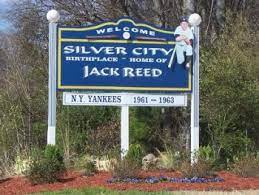 Next, we recall Jack Reed, a proud son of Silver City. Born on February 2, 1933, Reed, an outfielder for the New York Yankees, achieved great heights in baseball, becoming a World Series Champion in 1961 and 1962. Reed lived a full life in Silver City, drawing his last breath there on November 10, 2022. Jack is proof that hard work and determination can pay off no matter where you come from if you are willing to reach for your dreams.
Next, we recall Jack Reed, a proud son of Silver City. Born on February 2, 1933, Reed, an outfielder for the New York Yankees, achieved great heights in baseball, becoming a World Series Champion in 1961 and 1962. Reed lived a full life in Silver City, drawing his last breath there on November 10, 2022. Jack is proof that hard work and determination can pay off no matter where you come from if you are willing to reach for your dreams.
Music also finds its resonance along the Hooper Trail, personified in Denise Lasalle, a relative of the family. Lasalle, born as Ora Denise Allen on July 16, 1934, near Sidon, was a singer, songwriter, and producer who achieved great acclaim in her career, including a Number 1 R&B hit, “Trapped By A Thing Called Love.” Lasalle’s humble beginnings mirror our own family history; born into a family of sharecroppers, she rose from picking cotton to being inducted into the Rhythm and Blues Music Hall of Fame in 2015. Her legacy is marked with a Mississippi Blues Trail marker in Belzoni, honoring her contributions to the genre. Denise is a prime example of how to excel in life, even when you come from humble and oppressive beginnings, its not where you start, but where you end up!
Trail, personified in Denise Lasalle, a relative of the family. Lasalle, born as Ora Denise Allen on July 16, 1934, near Sidon, was a singer, songwriter, and producer who achieved great acclaim in her career, including a Number 1 R&B hit, “Trapped By A Thing Called Love.” Lasalle’s humble beginnings mirror our own family history; born into a family of sharecroppers, she rose from picking cotton to being inducted into the Rhythm and Blues Music Hall of Fame in 2015. Her legacy is marked with a Mississippi Blues Trail marker in Belzoni, honoring her contributions to the genre. Denise is a prime example of how to excel in life, even when you come from humble and oppressive beginnings, its not where you start, but where you end up!
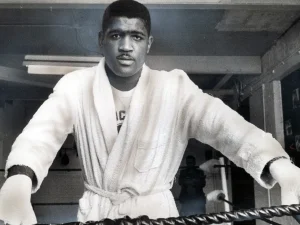 We also honor the legacy of Ernie Terrell, a heavyweight boxing world champion. Born on April 4, 1939, in Inverness and raised in Belzoni, Mississippi, Terrell held the World Boxing Association’s heavyweight title from 1965 to 1967, standing as one of the tallest heavyweights of his era. He shared his fame with his sister, Jean Terrell, a leading vocalist for the renowned music group, The Supremes in the early 1970s.
We also honor the legacy of Ernie Terrell, a heavyweight boxing world champion. Born on April 4, 1939, in Inverness and raised in Belzoni, Mississippi, Terrell held the World Boxing Association’s heavyweight title from 1965 to 1967, standing as one of the tallest heavyweights of his era. He shared his fame with his sister, Jean Terrell, a leading vocalist for the renowned music group, The Supremes in the early 1970s.
Speaking of Jean Terrell, she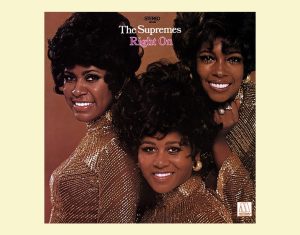 was born on November 26, 1944, in Belzoni, Mississippi. Her career began in 1969, and she’s been active ever since. She was discovered by Motown president Berry Gordy and initially signed as a solo artist. However, she was later chosen to replace Diana Ross in The Supremes, where she achieved significant success. Some of her hits include “Up the Ladder to the Roof,” “Everybody’s Got the Right to Love,” “Stoned Love,” and “Floy Joy.”
was born on November 26, 1944, in Belzoni, Mississippi. Her career began in 1969, and she’s been active ever since. She was discovered by Motown president Berry Gordy and initially signed as a solo artist. However, she was later chosen to replace Diana Ross in The Supremes, where she achieved significant success. Some of her hits include “Up the Ladder to the Roof,” “Everybody’s Got the Right to Love,” “Stoned Love,” and “Floy Joy.”
Indeed, the story of the Hooper trail is not complete without acknowledging the presence of one of the greatest blues musicians of all time, B.B. King. Also, a native of Leflore County before settling in Indianola, Mississippi, B.B. King’s unique bluesy sound and his inimitable guitar skills have left an indelible mark on the world of music.
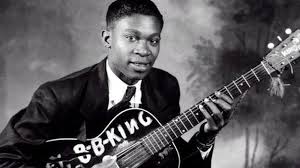 Before gaining worldwide acclaim, B.B. King was a local artist, honing his skills in the clubs and streets around town. Family members remember seeing a young King playing and singing with a passion that hinted at the star he would become. His music filled the air, touching the hearts of everyone who listened, embedding himself into the collective memory of the community.
Before gaining worldwide acclaim, B.B. King was a local artist, honing his skills in the clubs and streets around town. Family members remember seeing a young King playing and singing with a passion that hinted at the star he would become. His music filled the air, touching the hearts of everyone who listened, embedding himself into the collective memory of the community.
Years later, B.B. King’s legacy would come full circle through the Hooper family. Cornelius Mims—son of Margaret—served as musical director and bass player, while Ada’s son, Stan Patterson, took the stage with his band, Stan Patterson & Fahrenheit. Together, they performed live at B.B. King’s Club in Universal City, Los Angeles, backing soul legends Howard Hewett and Walter and Scotty Scott of The Whispers. In that powerful moment, they weren’t just celebrating their own musical achievements—they were honoring a fellow Mississippi native whose influence had shaped their path. It was a tribute to B.B. King, a hometown hero whose music inspired the world.
So, as we walk the Hooper Trail, the resonating chords of B.B. King’s guitar serve as a soundtrack, reminding us of the musical heritage embedded in our roots and the global influence that can emerge from even the smallest towns in Mississippi.
These individuals, their achievements, and their shared roots with the Hooper family bring a sense of pride and connection to our family history. As we journey along the Hooper Trail, we celebrate not just our ancestors but also these remarkable figures who share our origins.
Other Landmarks
The Joy/Crescent Movie Theater
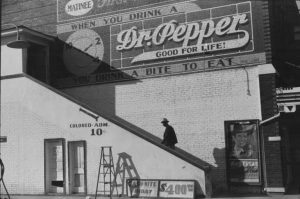
The Joy/Crescent Belzoni Movie Theater, a snapshot of a bygone era, stands as a stark reminder of the segregation that once marred American society. During those times, African Americans were required to sit in the balcony, while white patrons occupied the floor seats. Separate bathrooms were the norm—and not by choice. But the indignities didn’t stop there. Black families were barred from dining in certain restaurants, attending white-only schools, or even trying on clothes in department stores. They faced daily reminders that they were considered ‘less than’—not because of who they were, but because of unjust systems built to hold them back.
It’s vital that younger generations understand what was endured and overcome—not to dwell in pain, but to honor the courage, strength, and dignity of those who came before. They fought, sacrificed, and endured so future generations wouldn’t have to.
And now, it is not just a privilege, but an absolute duty to keep moving that progress forward. To settle for ‘better’ is not enough. We must reach for more—more equity, more opportunity, more justice. To accept things as they are today, without striving for what they should be, would be a disservice to the very people whose resilience made our lives possible. Their legacy demands more than remembrance—it demands action.
Civil Rights Leader Reverend George Lee
The tragic assassination of Reverend George Lee, a co-founder of the Belzoni branch of the NAACP, looms large in the history of the Hooper Trail. The first African American to register to vote in Humphreys County post-Reconstruction, Reverend Lee became a fearless advocate for voting rights, registering around 100 African American voters — a remarkable achievement given the perils of that era. His death in 1955 made him an early martyr of the civil rights movement. Ada Patterson recalls seeing Rev. Lee just hours before he was murdered.
Shotgun blasts hit Lee in the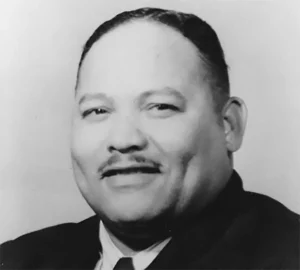 face as he was driving home one night, and his Buick smashed into a house. Local authorities claimed the lead pellets found in his shattered jaw were fillings from his teeth.
face as he was driving home one night, and his Buick smashed into a house. Local authorities claimed the lead pellets found in his shattered jaw were fillings from his teeth.
Mississippi NAACP Field Secretary Medgar Evers investigated the killing, and FBI tests concluded the pellets were buckshot. No one was ever prosecuted for this brutal killing.
More than 1,000 attended Lee’s funeral, and his widow, Rosebud, decided to open the casket to show how her husband had suffered. Photographs of his body ran in Jet magazine. A few months later, Emmett Till’s mother would do the same for her teenage son when he was killed.
Lee is among 40 martyrs listed on the Civil Rights Memorial in Montgomery, Alabama. Today, his memory is preserved by the Reverend George Lee Museum, founded and operated by Ms. Helen Sims in Belzoni, Mississippi. This museum also honors civil rights leader Fannie Lou Hamer.
Downtown Belzoni Entertainment
Downtown Belzoni was once the beating heart of  Humphreys County for teenagers and young adults who found joy in simple activities like strolling up and down the streets after a hard week of work and schooling. Although not quite Times Square, it held a unique charm for its locals. Enjoying an Ice cream or taking in a movie was a real treat in those days, in fact that still sounds like fun to me today, but of course I had a car when I started High School and a nice allowance or job growing up in California, the hardest thing I had do was household chores, which was nothing like picking cotton and working around the farm.
Humphreys County for teenagers and young adults who found joy in simple activities like strolling up and down the streets after a hard week of work and schooling. Although not quite Times Square, it held a unique charm for its locals. Enjoying an Ice cream or taking in a movie was a real treat in those days, in fact that still sounds like fun to me today, but of course I had a car when I started High School and a nice allowance or job growing up in California, the hardest thing I had do was household chores, which was nothing like picking cotton and working around the farm.
Later Education Opportunities
The educational journey of the Hooper children included O.M. McNair School, named after its founder, who became its principal in 1944. This school marked a turning point for them, as it was one of the first actual school buildings that some of the children could attend that was not in a church. Some of the older children went to a boarding school to further their education. McNair once was a High School for black children and now is an upper middle school.
Hooper children included O.M. McNair School, named after its founder, who became its principal in 1944. This school marked a turning point for them, as it was one of the first actual school buildings that some of the children could attend that was not in a church. Some of the older children went to a boarding school to further their education. McNair once was a High School for black children and now is an upper middle school.
They were not allowed to attend Humphreys County High School, a public school in Belzoni, which faced racial tensions after it was finally integrated around 1970. The school was accused of poor treatment of black students by the principal and teachers calling them names we won’t repeat here. By this time, the Hooper children had already graduated from school and did not attend this school.
Humphreys Academy, another school in Belzoni, established as a segregation academy in 1968, further evidences the racial struggles of the era. The school was built in response to the new law that made public schools open to all races. Rather than integrate with the black children, this school was built as a private school basically for whites only.
In 1970, the IRS revoked Humphreys Academy’s tax-exempt status because of its racially discriminatory admissions policies. Even now, as of 2016, the school’s students were 99% white, while Humphreys County was 75% black.
Catfish Capital of The World
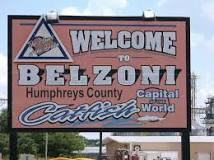 The city of Belzoni, a mere 6 miles from Silver City, is proudly known as the Catfish Capital of the World, with catfish farming replacing cotton as the main industry. This is why when driving around town in Belzoni, you will see many Catfish statues as city merchants pay tribute to their crown as the catfish capital of the world. However, in recent times, farming has reverted back to agriculture.
The city of Belzoni, a mere 6 miles from Silver City, is proudly known as the Catfish Capital of the World, with catfish farming replacing cotton as the main industry. This is why when driving around town in Belzoni, you will see many Catfish statues as city merchants pay tribute to their crown as the catfish capital of the world. However, in recent times, farming has reverted back to agriculture.
Part-time Work For Reverend Willie Hooper
For those of you who were too young to remember, or who hadn’t yet been born, here’s a little glimpse into how I knew Reverend Willie Hooper. This is for you—to help you understand the man behind the name, and to inspire you to carry forward the legacy he left. And for those who did know him, let this be a reminder of what he stood for—so we never let those memories fade.
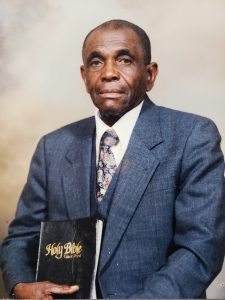
During his later years, as he transitioned from farming, Rev. Willie Hooper found employment at the local Piggly Wiggly Supermarket and other markets—an embodiment of his unwavering work ethic and humility. But make no mistake: his presence there was not ordinary. He was beloved and revered by the community—not only as a devoted man of God, but as a man of honor and integrity whose reputation was nothing short of impeccable.
I still remember going to the market as a young boy and witnessing the deep respect and affection people had for him. He didn’t just serve customers—he uplifted them. His interactions were filled with warmth, sincerity, and grace, leaving lasting impressions on everyone he met.
And sometimes, it still surprises me just how far that respect traveled. Years later, I was performing at a nightclub on the Promenade in downtown Long Beach—thousands of miles from Silver City, Mississippi, a town of less than 400 people. I was in the green room with my band and the club manager and his wife. The manager and I struck up a casual conversation about how I got into music and where I was from. I mentioned I was born in Mississippi—specifically Belzoni, assuming he wouldn’t know tiny Silver City. But to my surprise, he lit up and said he was from Belzoni too. Then I told him I was from Silver City and part of the Hooper family. He immediately turned to his wife, excited, and said, ‘I know Reverend Hooper! He’s a great man.’
Never in my wildest dreams did I expect that this white gentleman and his wife from the same part of Mississippi would not only know of my grandfather—but hold him in such high esteem. That moment reminded me again: Grandpa’s legacy wasn’t confined to one church or one community—it stretched far and wide, crossing every line that tried to divide people.
To this day, his name carries weight. Bankers, attorneys, politicians, clergy—you name it—they all held him in the highest regard. And I’ve experienced it personally: there have been moments when helping my parents with banking and real estate matters, I mentioned I was Reverend Willie Hooper’s grandson, and instantly, doors opened and heads nodded with respect. It wasn’t about fame—it was about the integrity behind the name.
His legacy is not something we can afford to take lightly. It’s not just a point of pride—it’s a responsibility. To be a descendant of Reverend Willie Hooper is to carry a torch that was lit by a life of purpose, principle, and faith. Our actions reflect on that name, and we must do everything in our power to honor and protect it.
A Slice of Blueberry Pie – Grandpa’s 70th Anniversary Remark”
At their 70th wedding anniversary celebration, the family pulled out all the stops. After all, how do you capture a love story that spanned seven decades, 16 children, and hundreds of descendants? You don’t rush something like that—so the ceremony was heartfelt… and admittedly, a bit long.
When it came time for the happy couple to share a few words, Grandma Leola, ever the graceful matriarch, stood and delivered a thoughtful, elegant reflection. Then it was Grandpa Willie’s turn.
He stood, looked around at the sea of children, grandchildren, and great-grandchildren, and with perfect timing said:
“You know I love blueberry pie… but when I’ve had enough, get it out of here.”
That was Grandpa in a nutshell. A man of few words, but when he spoke—he made it count. In that single line, he managed to express love, humor, and just the right amount of honesty. He let us know he appreciated the tribute… but it was time to wrap it up.
To this day, I still laugh about that moment. And just like blueberry pie, his memory is something we’ll always savor—just maybe not for too long at once, if he has anything to say about it.
The Hooper Children Leave The Roost and Later Return
As the Hooper children grew and ventured out into the world, Mama Leola’s words remained a guiding force. She had always stressed the importance of family staying together. ‘Alone, you are like a piece of string that can be easily torn apart,’ she would say. ‘But together—when you keep adding strings—it becomes like a rope, much more difficult to break apart.’
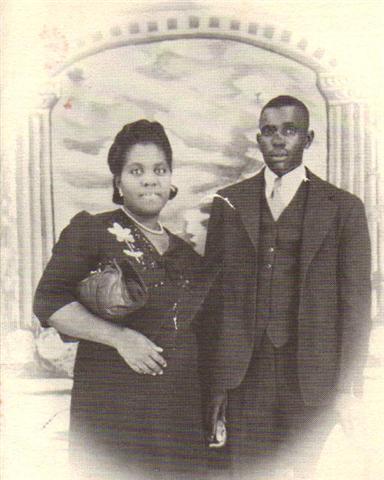
Holding onto her wisdom, most of her children settled in California, choosing to live near one another and maintain the close-knit bond she instilled in them. In doing so, they became that strong rope—woven together by love, loyalty, and shared roots—much harder to break apart than they ever could’ve been alone.
Whenever Mama Leola would visit California, her first words were always: ‘Let’s all gather around and give devotion to God.’ And we did. We would stop what we were doing, come together as a family, and offer prayer, sing hymns, and read scripture—right there in the living room. She made it a point to ground us in God before anything else. I remember how she’d gather us children and read Bible stories as if they were children’s books—bringing them to life in a way only she could. It wasn’t just about faith; it was about planting seeds, nurturing hearts, and tightening the family rope by intertwining it with spiritual strength. That’s who she was—a woman of deep love, unwavering faith, and quiet leadership.
But for those who didn’t know or don’t remember Mama Leola, let me be VERY clear: despite her overwhelming love and affection, she was not one to play with. When she walked into a room, your whole attitude changed—the volume of your voice dropped, your posture straightened, and somehow your shirt tucked itself in on cue. This wasn’t fear, and it wasn’t anything forced—it was earned respect. You just knew you had to be your best around her.
Now don’t get it twisted—she was no pushover. If discipline was needed, she had no hesitation about handing it out. And afterward? She’d pray with you, as lovingly as she corrected you. That was the balance of Mama Leola: tender but firm, kind but clear, faithful but fearless. She didn’t just raise children—she molded character. And in every one of us, you can still see the fingerprints of her influence.
In their later years, many of her children returned to Humphreys County, purchasing homes in the same neighborhood. Despite starting life as sharecroppers in a segregated society, the Hoopers now own beautiful homes and businesses in Belzoni—in areas where Black families were once prohibited to live. By staying together, they reaffirmed Mama Leola’s belief that family unity is what strengthens the family. From humble beginnings, they honored her legacy not just in words, but in how they lived.
To all current and future generations: remember what Mama Leola taught. Don’t let distance, pride, or time pull you apart. Keep adding strings. Stay connected. Stay grounded in faith. Be the rope that can’t be broken.
The Hooper Center & California Club,
Established by George Hooper and later transformed into a trendy nightclub managed by George and James Hooper—forms an integral part of the family’s legacy. Over the years, it became more than just a business; it was a gathering place that held the heart of the community and the Hooper family alike. The facility was home to many treasured family events, including the unforgettable 75th wedding anniversary celebration of Rev. Willie and Leola Hooper, numerous family reunions, and countless other joyful gatherings.
Beyond family, the venue earned its place in local history by hosting some of the biggest names in the Blues circuit and a variety of live entertainment, making it a cultural hotspot during its heyday. Today, the Hooper Center is owned by Lillie Dobson and managed by Margaret (Hooper) Parker, with help from other dedicated family members over the years. It is currently leased to another business owner and operates as a restaurant and banquet facility—still standing as a symbol of the family’s enduring legacy and love for community.
End Of The Trail
The tour concludes with a drive-by visit to some of the current Hooper family residences—a powerful reminder of how far this family has come. From the humble beginnings of sharecropping fields to the comfort and pride of homeownership and community leadership, the journey of the Hooper family is nothing short of remarkable. This final stretch of the tour is not just about seeing houses; it’s about seeing progress, perseverance, and proof of what’s possible.
The aim is to instill a deep sense of pride in the Hooper heritage and ensure its preservation for generations to come. For the younger generation especially, this is an opportunity to reflect on the strength, sacrifice, and determination that brought us here. These homes stand on the foundation built by those who came before—people who had little, but gave everything they had to create a better future.
Now, the next generation stands on their shoulders—not just to look back in gratitude, but to look forward with purpose. You are not only the beneficiaries of this legacy; you are the next authors of it. Sitting together to talk, share stories, and reflect after the tour will surely help cement these memories. But more than that, it will spark new dreams. Let this be a reminder that you, too, can leave behind something lasting. The Hooper legacy is still being written—and you have a chapter to add.
Other families may have more wealth, more land, or more fame—and God bless them. But they are not Hoopers. And you are. So stand proud and tall. Not better than anyone, but certainly not less than anyone. Carry that name with the grace, dignity, and quiet strength of those who came before you. Let their example fuel your future, and make your mark in a way that honors the name you represent.
If I said to you, ‘Act like a Hooper,’ what would that mean to you?
Ask yourself: would Rev. Hooper and Mama Leola be proud of how I represent them?
What Happened To The Durden Sidon Plantation?
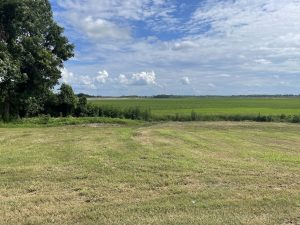 In 2011, the Durden Plantation was left to Mississippi State University in the will of Willis Durden “Dan” McGeary as the last surviving member of his family. He willed a total of 2,637 acres to the school; 2,069 acres of this land was the Sidon Plantation. The land was valued at $8 million at the time of the donation. McGeary, in his later years, lived in Marina Del Rey, California, and was an airline pilot.
In 2011, the Durden Plantation was left to Mississippi State University in the will of Willis Durden “Dan” McGeary as the last surviving member of his family. He willed a total of 2,637 acres to the school; 2,069 acres of this land was the Sidon Plantation. The land was valued at $8 million at the time of the donation. McGeary, in his later years, lived in Marina Del Rey, California, and was an airline pilot.
A Word For Our Younger Generations
Despite the harsh realities of being African Americans in Mississippi during a time of segregation and discrimination, the Hooper family held steadfast to a resilient and compassionate spirit. They never allowed bitterness to infiltrate their household, nor did they impart lessons of hatred to their children. Instead, they instilled in them the golden rule of treating others the way they themselves wanted to be treated.
Mama Leola often reminded her children, ‘You are not less than any man, nor are you greater than any man.’ With those words, she taught them to walk with both humility and dignity—to hold their heads high without ever looking down on others.
Above all, the family nurtured a robust faith in God, teaching their children to lean on divine wisdom and strength. It was this moral and spiritual foundation that carried them through the challenges of their time and empowered them to rise above adversity with grace.
Therefore, to the younger generation of the Hooper family, remember not to harbor anger about the past injustices endured by your forefathers, although there is plenty to be resentful of. In fact, it is vital to acknowledge that during those challenging times, numerous individuals from the white community extended kindness and support to minorities. The adversities of the past should not serve as a source of resentment but instead, be seen as a testament to the progress we have made as a society and the sacrifices others made for a better future. That being said, there is still room for improvement, things may be better than it was for our forefathers, but we have to strive to build upon the progress made by our predecessors and make things better for our youngest generation and for generations to come. Resting on the shoulders of our ancestors is not the end goal—it’s the starting point. Let’s rise from where they lifted us and do our part for those yet to come.
These historical accounts are not only to remind you of the struggles your ancestors faced but also to demonstrate the courage, resilience, and fortitude that fueled their journey. Recognizing the sacrifices made by those who came before you is crucial in appreciating the opportunities and freedoms you enjoy today, and it can prevent taking these privileges for granted. Stand tall, knowing that you are elevated on the shoulders of your predecessors.
As the family saying goes, “To God Be The Glory.” This adage serves as a constant reminder of the faith that has been the bedrock of the Hooper family, carrying them through the most challenging times and providing hope for a better future. It is a testament to the enduring strength, resilience, and spirit of the Hooper family legacy.



